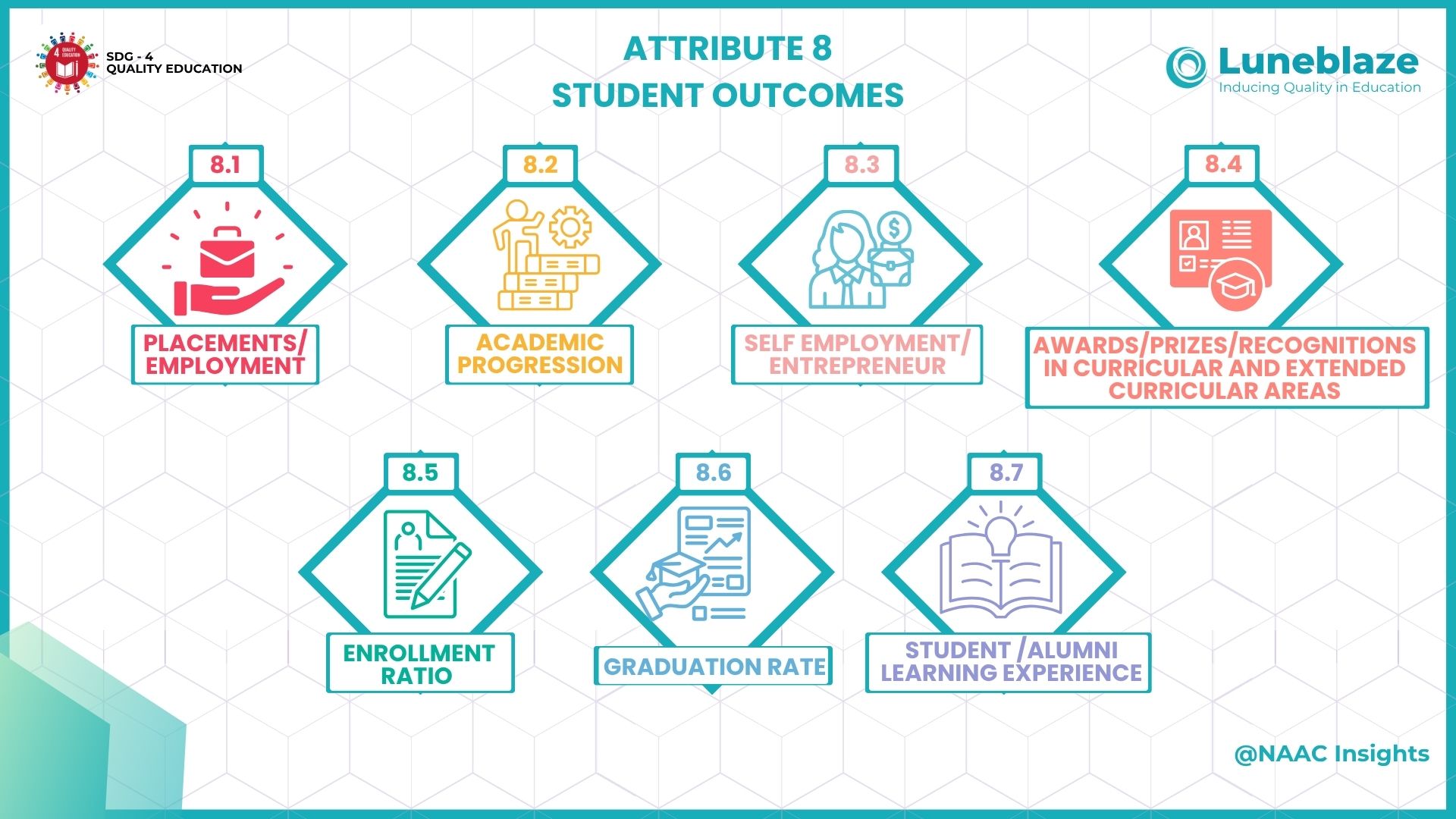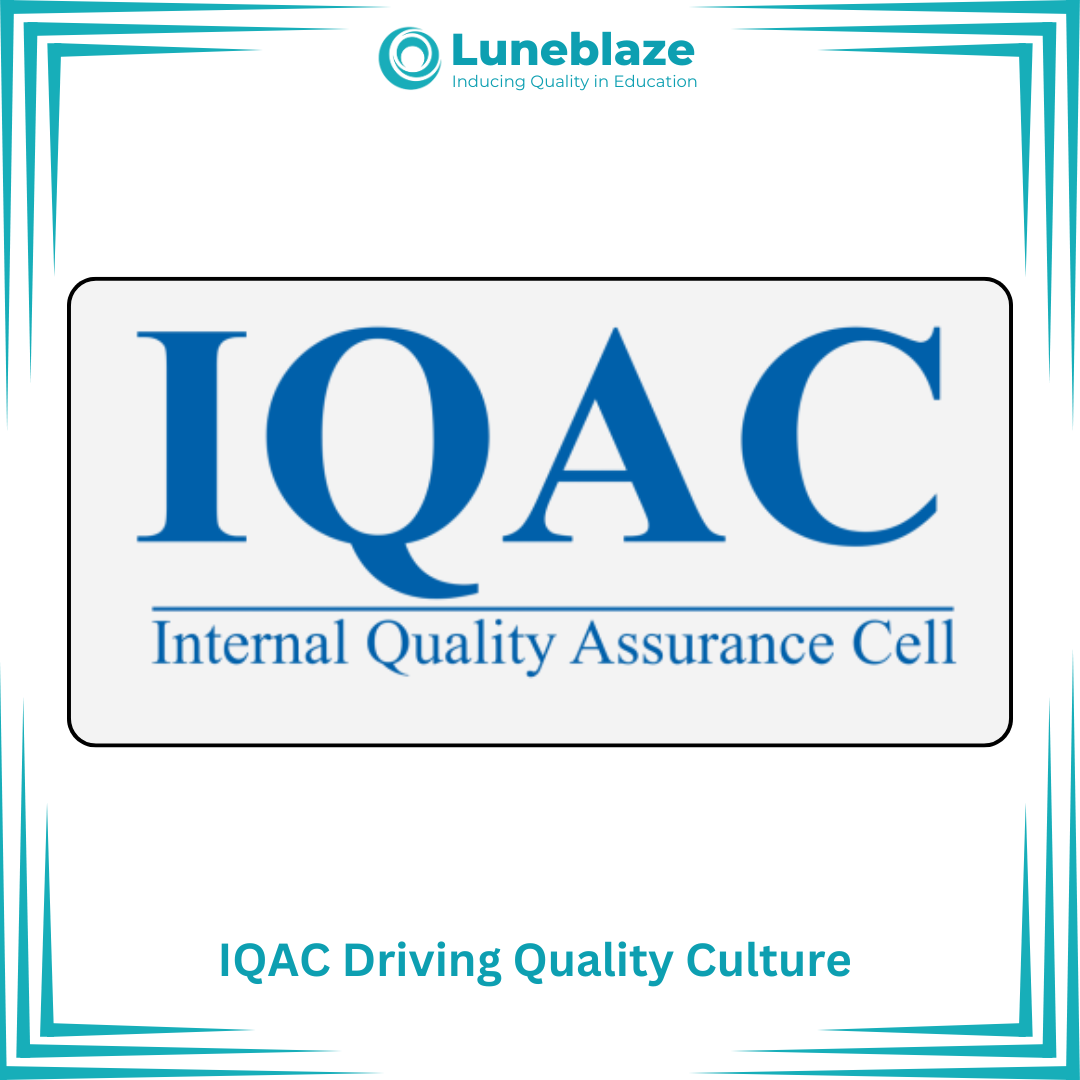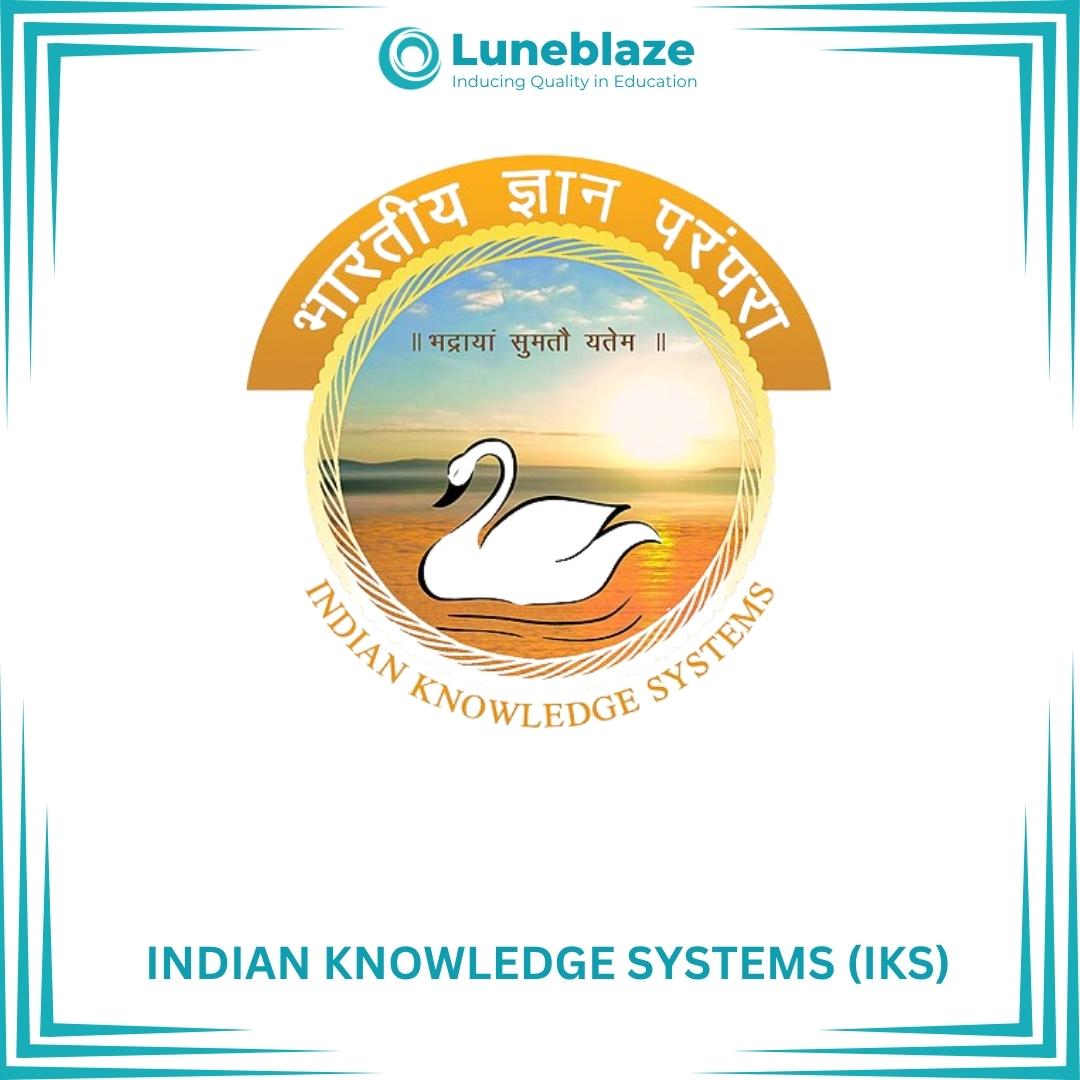Student Outcomes: Attribute 8 in NAAC's Binary Accreditation Framework

Jun 28, 2025
Imagine an educational environment where student achievements are measured not just by academic grades, but by real-world outcomes such as successful employment, entrepreneurial ventures, and national recognition. The NAAC Binary Accreditation Framework emphasizes the importance of evaluating HEIs based on student outcomes, ensuring that the education provided leads to tangible success in various spheres of life. This framework helps HEIs assess how effectively they are preparing students for the future, whether it’s through placements, higher education progression, self-employment, or extra-curricular excellence. By focusing on these outcomes, HEIs can improve their strategies, provide more targeted support, and ultimately create an environment that fosters student success beyond the classroom.
8.1 Placements/Employment: A critical indicator of a student’s readiness for the workforce is the percentage of graduates who secure employment, either through campus placements or through other means. Along with employment data, it’s essential to track the median salary to understand the economic potential of graduates entering the job market. HEIs that boast strong placement rates are clearly excelling in preparing students for the demands of the industry, providing a direct link between education and employment.
8.2 Academic Progression: Another important outcome is the academic progression of students. This refers to the percentage of graduates who continue their education, either through higher studies or research programs. By tracking this metric, HEIs can evaluate how effectively they are nurturing a culture of academic ambition, fostering a thirst for knowledge, and preparing students to contribute to their fields in meaningful ways through further studies or research.
8.3 Self-Employment/Entrepreneur: With the growing focus on innovation and entrepreneurship, the percentage of graduates who become self-employed or start their own businesses is a key measure of success. This highlights the ability of the HEIs to foster an entrepreneurial mindset among students, equipping them with the skills and knowledge to create their own opportunities in the workforce. Tracking this outcome over a three-year period gives a clear picture of the HEIs contribution to the entrepreneurial ecosystem.
8.4 Awards/Prizes/Recognitions in Curricular and Extended Curricular Areas: Student achievements extend beyond the classroom, and the number of external academic awards and recognitions received by students during the assessment period is an important indicator. In addition, awards for outstanding performance in co-curricular, extra-curricular activities, and sports at state, regional, national, and international events over the last three years further showcase the holistic development of students. These accolades reflect the well-roundedness of students, with many excelling in diverse areas beyond their academic pursuits.
8.5 Enrollment Ratio: The enrollment ratio represents the percentage of students admitted in the first year of the program against the sanctioned intake seats. This is a key indicator of an HEI’s ability to attract prospective students and its capacity to handle the academic load. A higher enrollment ratio often reflects the HEI’s strong reputation and demand among applicants.
8.6 Graduation Rate: The graduation rate measures the percentage of students who complete the program within the stipulated time frame. This outcome is critical for understanding how effectively the HEI supports students in their academic journey, providing the necessary resources, guidance, and support to help them succeed and complete their degrees on time.
8.7 Student/Alumni Learning Experience: The student and alumni learning experience can be gauged through surveys, providing insights into how students perceive their education and how alumni view the relevance and effectiveness of their academic preparation in their professional lives. Positive feedback from both current students and alumni indicates that the HEI is successful in delivering a meaningful and impactful educational experience.
As we reflect on the various student outcomes highlighted by Attribute 8, it becomes clear how these indicators provide valuable insights into the effectiveness of an HEI’s educational approach. By focusing on placements, academic progression, self-employment, and other key metrics, this attribute offers a comprehensive view of how well HEIs are preparing students for the challenges and opportunities that lie ahead. These outcomes not only reflect the HEI’s success but also help shape the future trajectory of students, ensuring that they are equipped to succeed in an ever-evolving world.
To support Colleges and Universities (HEIs) in their accreditation journey, Luneblaze provides a comprehensive end-to-end solution to HEIs for all their accreditation criteria needs. With the help of Luneblaze’s AI-enabled solutions, HEIs can organize and manage all their data related to accreditation.
Together, let’s raise educational standards. Reach us at: naac@luneblaze.com
Trusted by
100+
Institutions
worldwide
since 2017
Get started with Accreditation Excellence
Explore how our AI-enabled accreditation solution simplifies the accreditation journey










